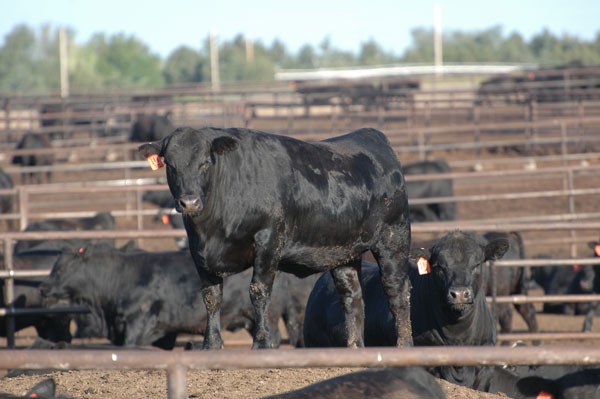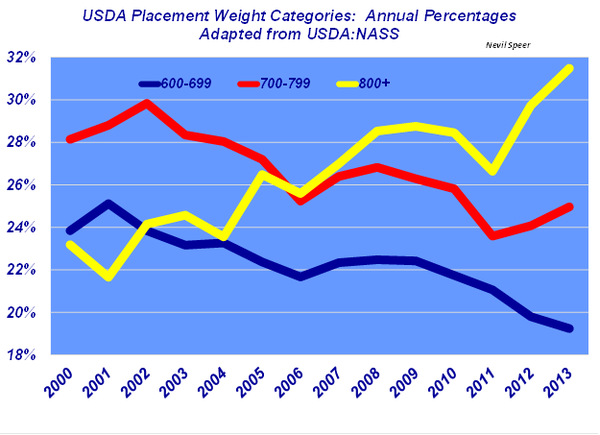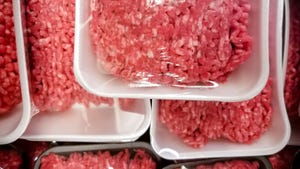Industry At A Glance: Composition Of Feedyard Calf Placements
Feedyards have increasingly been feeding pens with heavier, not lighter, cattle.
July 8, 2014

There’s been an important shift occurring among the nation’s feedyards over time. Most notably, the composition of placements has undergone some significant changes since 2000.
Conventional wisdom would suggest that cattle feeders, challenged by tight supply, would be chasing lighter-weight calves to fill pens. That does happen in spurts. However, if maintained, that strategy in the aggregate would pull the feeder cattle supply ahead into the feeding sector and comprise a lighter-weight placement mix into feedyards. However, just the opposite has occurred. In fact, feedyards have increasingly been feeding pens with heavier, not lighter, cattle.
The heaviest category (800+ lbs.) has increased from about 23% of the placement mix in 2000, to nearly 32% in 2013. Meanwhile, the categories of 600-699 lbs. and 700-799 lbs. have collectively declined nearly the same portion (about 8%) during the same time frame.
Interestingly enough, calves weighing less than 600 lbs. have remained relatively steady – comprising about 25% of placements year-in, year-out (thus the category is not included on the graph).

The trend represents some important insight into the feeding business. There’s probably any number of causes including a tightening labor situation and rising feed costs over time. However, it’s also likely the trend represents a broader strategy to manage risk.
Heavier calves represent a shorter feeding period and thus reduce both performance and market uncertainties associated with extended feeding regimes.
Subscribe now to Cow-Calf Weekly to get the latest industry research and information in your inbox every Friday!
What other causes might be driving this trend? How do you foresee the influence on the feeding sector over time? What impact might this have on the market and stocker operations in the future? Leave your thoughts below.
You Might Also Like:
Virtual Tour: Visit The World's Largest Vertically Integrated Cattle Operation
Five 4C Summit Video Interviews
10 Signs You Grew Up On A Farm
Tips For Minimizing Heat Stress In Cattle
How To Treat Pinkeye In Cattle
Pasture Management: Better Forage Through Proactive Blackberry And Thistle Control
About the Author(s)
You May Also Like





